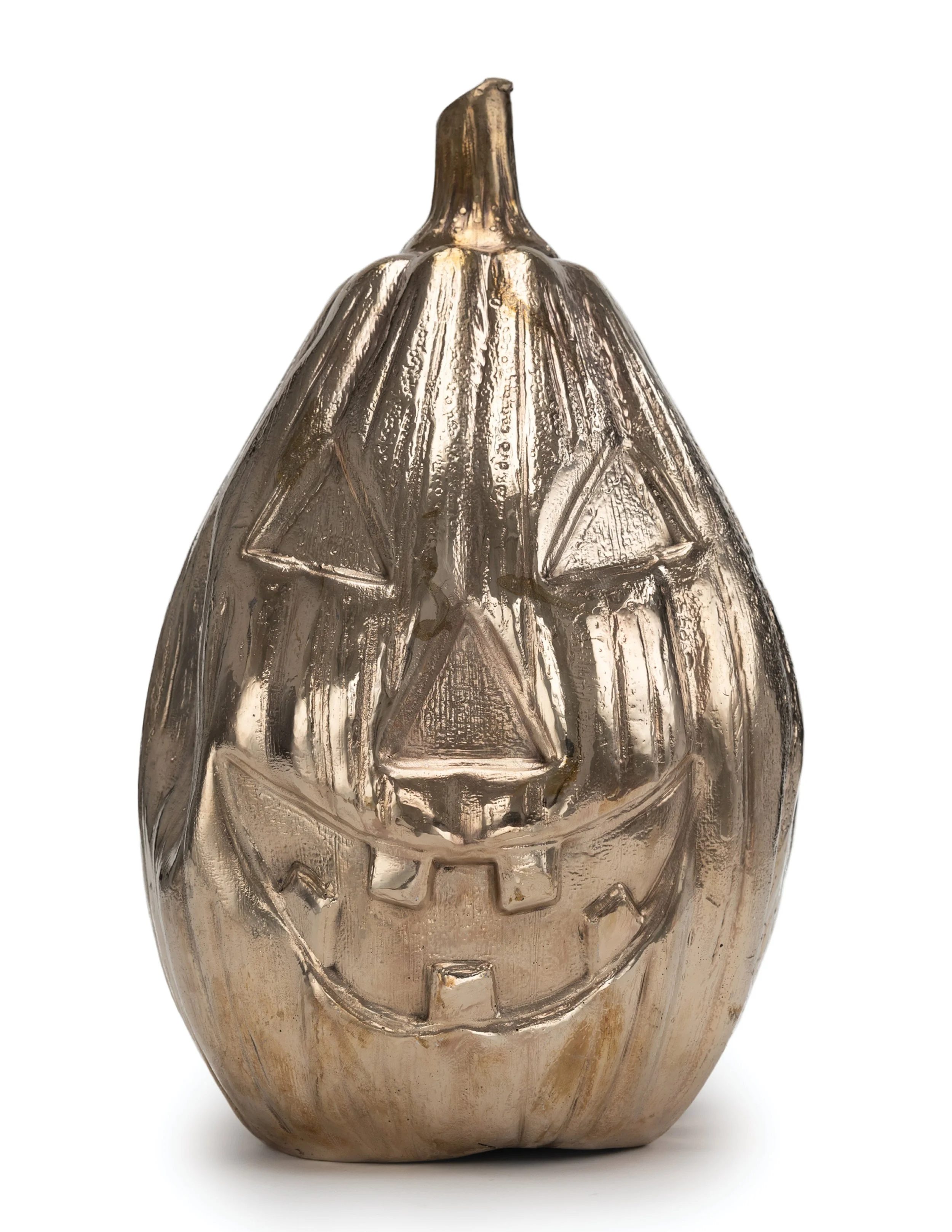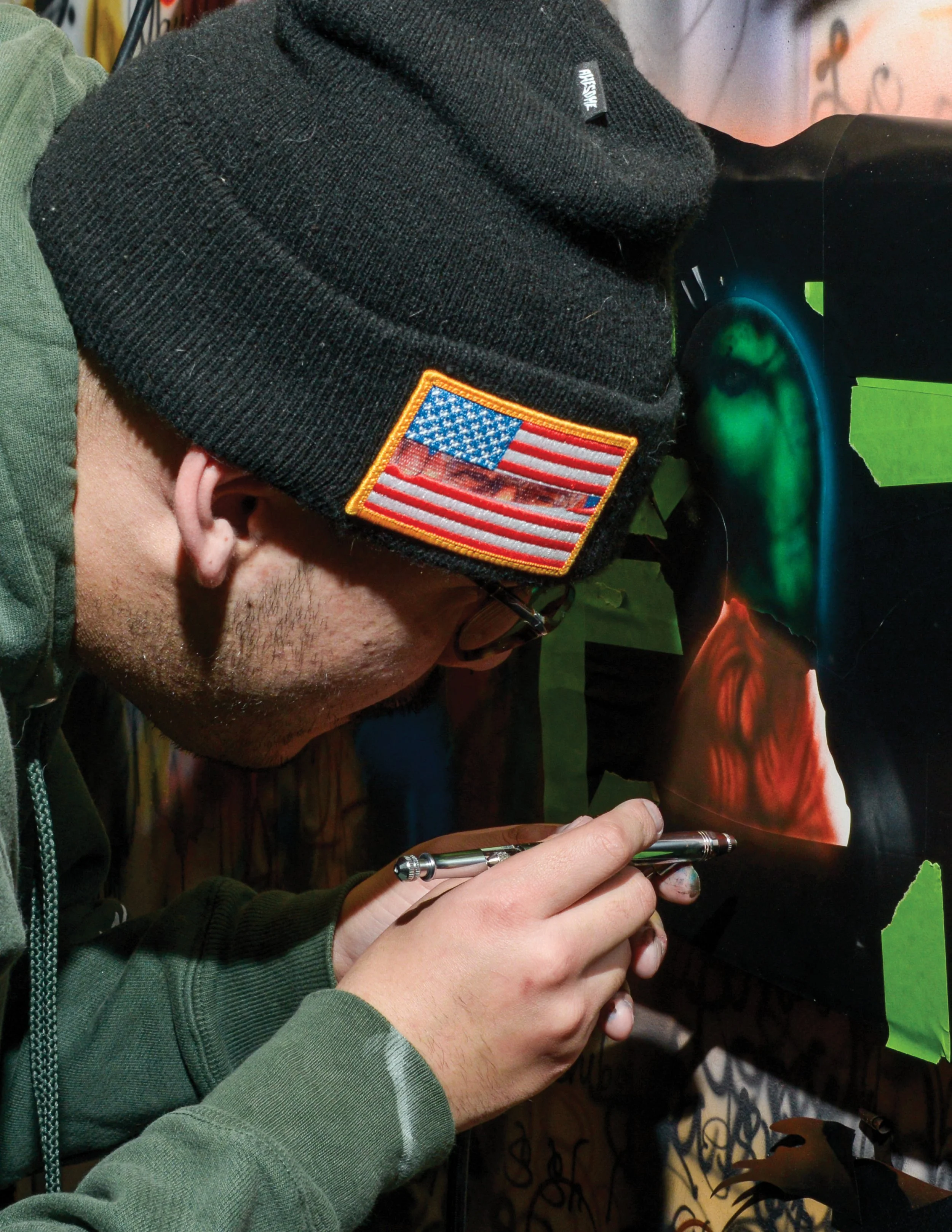God's Busy, Can I Help You? Interview
God’s Busy, Can I Help You?
Interview with Willbert Olivar and Lalo Avila
Opening: Saturday, May 31st, 2025 6-9 PM
Studio visit | Photo by Eddie Salinas
GGLA: How did your collaboration begin, and what drew you to work together creatively?
Around 2016, we met while working at a hotel and quickly bonded over our mutual interest in art and artists. We later discovered that we were both attending Santa Monica College and taking the same art classes, although at different times. As our friendship grew, we began sharing our illustrations. One memorable incident occurred when I accidentally spilled ink on an illustration Will was working on. Instead of discarding it, I painted over the ink to salvage the piece. This event sparked conversations about collaboration, and we soon began developing ideas on canvas.
-Lalo Avila
Studio visit | Photo by Eddie Salinas
GGLA: How do you navigate making work as a duo with two distinct voices and areas?
It isn’t easy. We understand that our work draws from both our experiences, which are important. A lot of communication, brainstorming, and arguing goes into creating balance; each detail is agreed upon throughout the time it takes to complete a piece. To finish this body of work, we’ve returned to our original method of dropping pieces at each other’s studios and working independently. This adds complexity to completing a piece, which we have had to relearn at this stage in our career.
- Willbert Olivar
Studio visit | Photo by Eddie Salinas
GGLA: How do horror, religion, and omens function in your work as tools for critical or cultural reflection?
The horror in our work prompts conversations about systemic issues in our communities. Symbols like the checkpoint from our previous work and the cone in this exhibition represent the culture and landscape of Los Angeles, highlighting gentrification. Omens challenge imposed religious beliefs, and we incorporate symbols like the black cat and crow, often seen as death symbols. We contrast these with everyday images, like a window, to show outsiders’ perceptions of our communities as sites of danger, whereas insiders view the black cat, an omen, as beloved. The use of religious imagery, omens, and horror compels the audience to engage deeply with our pieces. We see both omens and gentrification as monstrosities deserving of criticism and reflection.
-Willbert Olivar
Original pumpkin ornament | Photo by GGLA
Studio visit | Photo by Eddie Salinas
Willbert Olivar and Lalo Avila, Gaspar, 2025, Bronze, 19 x 20 x 20 in.
GGLA: What is the significance of the pumpkin in this body of work, and how do personal objects become part of your visual language?
Pumpkins are often an image seen representing Halloween, horror, and darker themes. In many religions, Halloween is frowned upon. Growing up, I had experiences being judged by my neighbors for celebrating Halloween due to having decorations around the front of my house. I was judged specifically for the pumpkins displayed at our exhibition. Being young, I never understood why I was judged, and as my parents were sorting items to throw out, I saw the pumpkins and decided to save them to use them in my work, becoming part of my visual language. The pumpkin represents that horrors are always going to be present, whether polished or not, and divine intervention is not always granted.
-Willbert Olivar
Studio visit | Photo by Eddie Salinas
GGLA: What led you to explore new materials, and how do they alter the spatial or conceptual experience of the work?
We sought a durable material that would endure over time. Bronze is often inaccessible to lower-income communities due to its cost and the difficulty of learning the necessary skills. Our drive for growth and challenge led us to explore bronze and the lost wax process. The bronze pumpkins engage the audience both physically and emotionally, positioned for viewing from all angles. This setup allows viewers to become part of the display, mirroring the judgment I felt by my neighbors for the pumpkin decorations.
(Detail view) Willbert Olivar and Lalo Avila, Gaspar, 2025, Bronze, 19 x 20 x 20 in.
GGLA: What is the significance of the Snooty Fox Motor Inn in your practice—as a site, symbol, or memory?
I have lived a few blocks from the Snooty Fox Motor Inn majority of my life, it’s more than just an image or foreground. We use it as a symbol to pinpoint a location where our creativity draws from. It’s a way to filter the audience from those who grew up in Los Angeles and have their connections to the Snooty Fox, and those who didn’t. This motor inn has history, serving as a sort of landmark to some.
-Willbert Olivar
Willbert Olivar and Lalo Avila, Normandie, 2025, Acrylic on Canvas over Panels, 24 x 34 in.
GGLA: What kind of emotional or intellectual experiences are you hoping to create for viewers of this work?
We aim to spark conversations about the reasons behind using symbols in our work that represent social commentary. For example, we exaggerate the imagery of a trash can through a horror theme. This exaggeration highlights certain aspects of items we encounter in our communities that reflect the narratives often created by outsiders to describe neighborhoods in Los Angeles and Ciudad de Mexico—descriptions that portray these areas as dirty, scary, and dangerous, especially before gentrification. These misrepresentations of the cities we know and love, cities we had to leave behind, created a common bond among us that inspired the creation of works expressing our frustrations. We hope to encourage our audience to think more deeply about our art and its connections to the world, rather than viewing it as a singular experience.
Studio visit | Photo by Eddie Salinas











